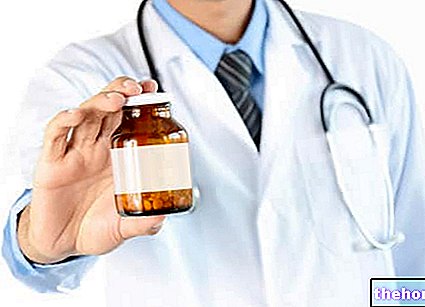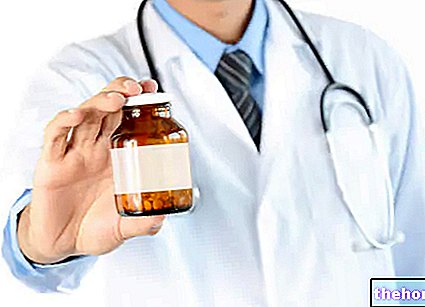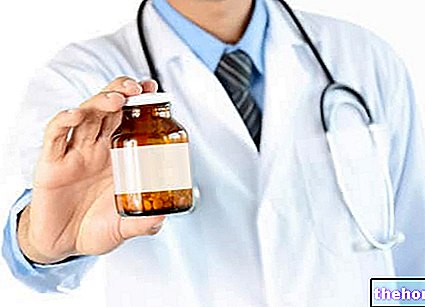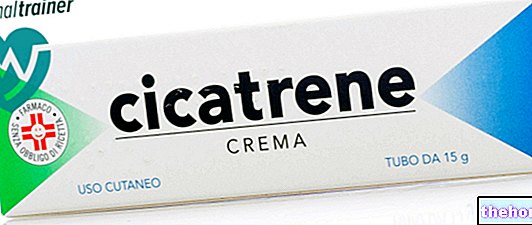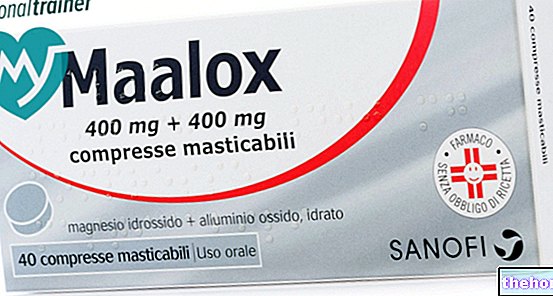Active ingredients: Sildenafil
Sildenafil Teva, Film Coated Tablets
Source Package Leaflet: AIFA (Italian Medicines Agency). Content published in January 2016. The information present may not be up-to-date.
To have access to the most up-to-date version, it is advisable to access the AIFA (Italian Medicines Agency) website. Disclaimer and useful information.
01.0 NAME OF THE MEDICINAL PRODUCT
SILDENAFIL TEVA TABLETS COATED WITH FILM
02.0 QUALITATIVE AND QUANTITATIVE COMPOSITION
Sildenafil Teva 25 mg film-coated tablets
Each tablet contains sildenafil citrate, equivalent to 25 mg of sildenafil.
Sildenafil Teva 50 mg film-coated tablets
Each tablet contains sildenafil citrate, equivalent to 50 mg of sildenafil.
Sildenafil Teva 100 mg film-coated tablets
Each tablet contains sildenafil citrate, equivalent to 100 mg of sildenafil.
For the full list of excipients, see section 6.1
03.0 PHARMACEUTICAL FORM
Film-coated tablets.
Sildenafil Teva 25 mg film-coated tablets
White, oval-shaped film-coated tablets debossed with "S 25" on one side and plain on the other side.
Sildenafil Teva 50 mg film-coated tablets
White, oval-shaped film-coated tablets debossed with "S 50" on one side and plain on the other side.
Sildenafil Teva 100 mg film-coated tablets
White, oval-shaped film-coated tablets debossed with "S 100" on one side and plain on the other side.
04.0 CLINICAL INFORMATION
04.1 Therapeutic indications
Sildenafil Teva is indicated in adult men with erectile dysfunction, which is the inability to achieve or maintain an erection suitable for satisfactory sexual activity.
Sexual stimulation is required for Sildenafil Teva to be effective.
04.2 Posology and method of administration
Dosage
Use in adults:
The recommended dose is 50 mg as needed, taken approximately one hour before sexual activity.
Based on efficacy and tolerability, the dose may be increased to 100 mg or decreased to 25 mg. The maximum recommended dose is 100 mg. The product should not be administered more than once a day. If Sildenafil Teva is taken together with meals, the onset of action may be delayed compared to taking in the fasted state (see section 5.2).
Special populations
Senior citizens:
Dosage adjustments are not required in elderly patients (≥ 65 years old).
Renal impairment:
The dosing recommendations described under "Use in adults" also apply to patients with mild to moderate renal impairment (creatinine clearance = 30-80 mL / min).
Since sildenafil clearance is reduced in patients with severe renal impairment (creatinine clearance
Hepatic impairment:
Since sildenafil clearance is reduced in patients with hepatic impairment (e.g. cirrhosis), a 25 mg dose should be considered. Based on efficacy and tolerability, the dose may be gradually increased to 50 mg and up to 100 mg as needed.
Pediatric population:
Sildenafil Teva is not indicated for people under 18 years of age.
Use in patients taking other medicines
With the exception of ritonavir, for which co-administration with sildenafil is not recommended (see section 4.4) a starting dose of 25 mg should be considered in patients receiving concomitant treatment with CYP3A4 inhibitors (see section 4.5).
Before starting sildenafil treatment, to minimize the development of postural hypotension in patients receiving alpha-blockers, patients should be stabilized on alpha-blocker treatment. In addition, initiation of treatment with sildenafil at a dose of 25 mg should be considered (see sections 4.4 and 4.5).
Method of administration
Oral use.
04.3 Contraindications
Hypersensitivity to the active substance or to any of the excipients listed in section 6.1.
Consistent with the established effects on the nitric oxide / cyclic guanosine monophosphate (cGMP) pathway (see section 5.1), sildenafil was found to potentiate the hypotensive effects of nitrates and therefore co-administration with nitric oxide donors (such as amyl nitrite) or with nitrates in any form is contraindicated.
Co-administration of PDE5 inhibitors, including sildenafil, with guanylate cyclase stimulants, such as riociguat, is contraindicated as it may lead to symptomatic hypotension (see section 4.5).
Products indicated for the treatment of erectile dysfunction, including sildenafil, should not be used in individuals for whom sexual activity is not recommended (eg patients with severe cardiovascular disorders, such as unstable angina or severe heart failure).
Sildenafil Teva is contraindicated in patients who have lost sight in one eye due to non-arteritic anterior ischemic optic neuropathy (NAION), regardless of whether this event was related to previous use of a type 5 phosphodiesterase inhibitor. (PDE5) (see section 4.4).
The safety of use of sildenafil has not been studied in the following subgroups of patients and therefore the use of the product is contraindicated in these patients: severe hepatic impairment, hypotension (blood pressure stroke or myocardial infarction and known hereditary degenerative diseases of the retina, like retinitis pigmentosa (a minority of these patients have genetic pathologies of retinal phosphodiesterases).
04.4 Special warnings and appropriate precautions for use
Before considering drug treatment, a medical history and physical examination should be done in order to diagnose erectile dysfunction and determine the underlying causes of the condition.
Cardiovascular risk factors
Because there is a percentage of cardiac risk associated with sexual activity, physicians should review the cardiovascular condition of patients before initiating any treatment for erectile dysfunction. Sildenafil has vasodilatory properties that result in mild and transient decreases in blood pressure (see section 5.1 Before prescribing sildenafil, physicians should carefully consider whether these vasodilatory effects may have adverse consequences in patients with certain underlying conditions, especially in association with sexual activity. Patients most sensitive to vasodilatory effects include patients with obstruction of systolic output (e.g. aortic stenosis, hypertrophic obstructive cardiomyopathy) or those with multiple system atrophy, a rare syndrome manifesting in the form of severely impaired autonomic blood pressure control. .
Sildenafil Teva potentiates the hypotensive effect of nitrates (see section 4.3).
Serious cardiovascular events, including myocardial infarction, unstable angina, sudden cardiac death, ventricular arrhythmias, cerebrovascular haemorrhage, transient ischemic attack, hypertension and hypotension have been reported during the marketing period of the product, in temporal association with the use of sildenafil. Most, but not all, of these patients had pre-existing cardiovascular risk factors. Many events have been reported to occur during or shortly after intercourse and some soon after sildenafil intake in the absence of sexual activity. it is possible to determine whether these events are directly related to these or other factors.
Priapism
Products indicated for the treatment of erectile dysfunction, including sildenafil, should be used with caution in patients with anatomical deformations of the penis (e.g. angulation, cavernous fibrosis or Peyronie's disease) or in patients with conditions that may predispose to priapism ( such as sickle cell anemia, multiple myeloma or leukemia).
Prolonged erections and priapism have been reported in post-marketing experience with sildenafil. If an erection persists for more than 4 hours, the patient should seek medical attention immediately. If priapism is not treated immediately, tissue damage may occur. penis and permanent loss of erectile function.
Concomitant use with other PDE5 inhibitors or other treatments for erectile dysfunction
The safety and efficacy of combining sildenafil with other PDE5 inhibitors, other sildenafil-containing treatments for pulmonary arterial hypertension (PAH), or other treatments for erectile dysfunction have not been studied. Therefore, the use of these associations is discouraged.
Effects on sight
Cases of visual disturbances have been reported spontaneously, in association with the use of sildenafil and other PDE5 inhibitors (see section 4.8). Cases of non-arteritic anterior ischemic optic neuropathy, a rare disease, have been reported spontaneously and in an observational study in combination with the use of sildenafil and other PDE5 inhibitors (see section 4.8). Patients should be advised that in the event of sudden visual defect, they should stop taking Sildenafil Teva and consult a physician immediately (see section 4.3).
Concomitant use with ritonavir
Concomitant administration of sildenafil and ritonavir is not recommended (see section 4.5).
Concomitant use with alpha-blockers
Caution is advised when sildenafil is administered to patients receiving alpha-blockers as concomitant administration may cause symptomatic hypotension in some sensitive individuals (see section 4.5). This is most likely to occur within 4 hours of taking sildenafil. Before starting sildenafil treatment, to minimize the development of postural hypotension, patients should be haemodynamically stabilized with treatment with alpha-blocker base. Initiation of sildenafil at a dose of 25 mg should be considered (see section 4.2). In addition, physicians should advise patients what to do in the presence of symptoms of postural hypotension.
Effect on bleeding
Studies with human platelets indicate that sildenafil potentiates the antiplatelet effect of sodium nitroprusside in vitro. No information is available regarding the safety of sildenafil administration in patients with bleeding disorders or with active peptic ulcer. Therefore, sildenafil should only be administered to these patients after a "careful risk-benefit assessment."
Women
Sildenafil Teva is not indicated for use in women.
04.5 Interactions with other medicinal products and other forms of interaction
Effects of other medicinal products on sildenafil
In vitro studies:
Sildenafil is mainly metabolised by cytochrome P450 (CYP) isoenzymes 3A4 (major route) and 2C9 (secondary route). Therefore, inhibitors of these isoenzymes may reduce the clearance of sildenafil and inducers of these isoenzymes may increase the clearance of sildenafil.
In vivo studies:
Pharmacokinetic analysis performed in clinical studies indicates a reduction in sildenafil clearance when co-administered with CYP3A4 inhibitors (eg ketoconazole, erythromycin, cimetidine). Although no increased incidence of adverse events was seen in these patients, when sildenafil co-administered with CYP3A4 inhibitors, a starting dose of 25 mg should be considered.
When ritonavir, an HIV protease inhibitor and highly specific cytochrome P450 inhibitor, was co-administered with sildenafil (100 mg single dose), at steady state (500 mg twice daily) an increase of 300 mg was seen. % (4-fold) sildenafil Cmax and a 1,000% (11-fold) increase in plasma sildenafil AUC. At 24 hours, sildenafil plasma levels were still approximately 200 ng / mL, compared with approximately 5 ng / mL detected when sildenafil was administered alone. This finding is consistent with the marked effects of ritonavir on a wide range of cytochrome P450 substrates. Sildenafil did not alter the pharmacokinetics of ritonavir. Based on these pharmacokinetic findings, co-administration of sildenafil and ritonavir is not recommended (see section 4.4), and in any case the maximum dose of sildenafil should not exceed 25 mg over 48 hours.
When saquinavir, an HIV protease inhibitor and CYP3A4 inhibitor, was co-administered with sildenafil (100 mg single dose), a 140% increase in Cmax was observed at steady state (1200 mg three times daily). of sildenafil and a 210% increase in sildenafil AUC. Sildenafil did not alter the pharmacokinetics of saquinavir (see section 4.2). Stronger CYP3A4 inhibitors, such as ketoconazole and itraconazole, are expected to have greater effects.
When a single 100 mg dose of sildenafil was co-administered with the moderate CYP3A4 inhibitor erythromycin, at steady state (500 mg twice daily for 5 days) there was a 182% increase in systemic sildenafil exposure. (AUC). In healthy male volunteers, there was no effect of azithromycin (500 mg / day for 3 days) on the AUC, Cmax, tmax, elimination constant or half-life of sildenafil or its major circulating metabolite. Concomitant administration of cimetidine ( 800 mg), cytochrome P450 inhibitor and non-specific CYP3A4 inhibitor, and sildenafil (50 mg) in healthy volunteers, caused a 56% increase in plasma concentrations of sildenafil.
Grapefruit juice is a weak inhibitor of CYP3A4 of intestinal wall metabolism and therefore may result in modest increases in plasma levels of sildenafil.
Single dose administration of antacid (magnesium hydroxide / aluminum hydroxide) did not change the bioavailability of sildenafil.
Although no specific interaction studies have been conducted with all medicinal products, the population pharmacokinetic analysis did not show any effects on the pharmacokinetics of sildenafil following concomitant treatment with CYP2C9 inhibitors (eg tolbutamide, warfarin, phenytoin), CYP2D6 inhibitors (eg selective serotonin reuptake inhibitors, tricyclic antidepressants), thiazide and similar diuretics, loop diuretics and potassium-sparing diuretics, angiotensin converting enzyme inhibitors, calcium channel blockers, beta-adrenergic receptor antagonists or inducers of CYP450 metabolism (e.g. rifampicin and barbiturates). In a study conducted in healthy male volunteers, co-administration of the endothelin antagonist bosentan (an inducer of CYP3A4 [moderate], CYP2C9 and possibly CYP2C19) at steady state (125 mg twice daily) and sildenafil at steady state (80 mg three times daily) produced a 62.6% and 55.4% decrease in sildenafil AUC and Cmax, respectively. Therefore, concomitant administration of strong CYP3A4 inducers, such as rifampicin , may cause larger decreases in sildenafil plasma concentrations.
Nicorandil is a hybrid that works as a nitrate and as a drug that activates potassium channels. As a nitrate it can cause serious interactions when given together with sildenafil.
Effects of sildenafil on other medicinal products
In vitro studies :
Sildenafil is a weak inhibitor of the cytochrome P450 isoenzymes: 1A2, 2C9, 2C19, 2D6, 2E1 and 3A4 (IC50> 150 μM). Since peak plasma concentrations of approximately 1 μM are achieved at recommended doses, it is unlikely that Sildenafil Teva will alter the clearance of substrates of these isoenzymes.
There are no data on interactions between sildenafil and non-specific phosphodiesterase inhibitors, such as theophylline or dipyridamole.
In vivo studies :
In accordance with the established effects on the nitric oxide / cGMP pathway (see section 5.1), sildenafil has been shown to potentiate the hypotensive effects of nitrates and therefore co-administration with nitric oxide donors or nitrates in any form. is contraindicated (see section 4.3).
Riociguat: Preclinical studies have shown an additive systemic blood pressure lowering effect when PDE5 inhibitors were combined with riociguat. Clinical studies have shown that riociguat increases the hypotensive effect of PDE5 inhibitors. There was no evidence of a favorable clinical effect of the combination in the population studied. Concomitant use of riociguat with PDE5 inhibitors, including sildenafil, is contraindicated ( see section 4.3).
Concomitant administration of sildenafil in patients on alpha-blocker therapy may cause symptomatic hypotension in some susceptible individuals. This is most likely to occur within 4 hours after sildenafil intake (see sections 4.2 and 4.4.). In three direct interaction studies the alpha-blocker doxazosin (4 mg and 8 mg) and sildenafil (25 mg, 50 mg or 100 mg) were administered concomitantly in patients with benign prostatic hypertrophy (BPH) stabilized on doxazosin therapy.
In these population studies, mean additional reductions in supine blood pressure of 7/7 mmHg, 9/5 mmHg and 8/4 mmHg, respectively, and mean additional reductions in standing blood pressure of 6/6 mmHg, respectively, were observed. 4 mmHg and 4/5 mmHg. Cases of patients reporting symptomatic postural hypotension have rarely been reported when sildenafil and doxazosin were administered together in patients stabilized on doxazosin therapy. These cases included dizziness and confusion of mind, but not syncope.
No significant interactions were observed when sildenafil (50 mg) was co-administered with tolbutamide (250 mg) or warfarin (40 mg), both of which are metabolised by CYP2C9.
Sildenafil (50 mg) did not potentiate the increase in bleeding time caused by acetylsalicylic acid (150 mg).
Sildenafil (50 mg) did not potentiate the hypotensive effects of alcohol in healthy volunteers with maximum blood alcohol levels averaging 80 mg / dl.
Analysis of data for the following classes of antihypertensive drugs revealed no difference in the tolerability profile between patients who took sildenafil and those treated with placebo: diuretics, beta-blockers, ACE inhibitors, angiotensin II antagonists, antihypertensives (vasodilators and centrally acting), neuroadrenergic blockers, calcium channel blockers and alpha-adrenoceptor blockers. In a specific interaction study, in which sildenafil (100 mg) was co-administered with amlodipine in hypertensive patients, the additional reduction in supine systolic blood pressure was 8 mmHg. The corresponding additional reduction in diastolic blood pressure in supine supine position was 7 mmHg These additional blood pressure reductions were comparable to those seen when sildenafil was administered alone to healthy volunteers (see section 5.1).
Sildenafil (100 mg) did not alter the steady-state pharmacokinetics of the HIV protease inhibitors, saquinavir and ritonavir, both of which are substrates of CYP3A4.
In healthy male volunteers, steady state sildenafil (80 mg three times daily) caused a 49% increase in bosentan AUC and a 42% increase in bosentan Cmax (125 mg twice daily).
04.6 Pregnancy and lactation
The use of Sildenafil Teva in women is not indicated.
There are no adequate and well-controlled studies on the use of the drug during pregnancy or during lactation.
No relevant adverse events were found in reproduction studies in rats and rabbits following oral administration of sildenafil.
No effect on sperm motility or morphology was observed following administration of single oral doses of 100 mg sildenafil to healthy volunteers (see section 5.1).
04.7 Effects on ability to drive and use machines
No studies on the ability to drive and use machines have been performed.
As dizziness and disturbed vision have been reported in clinical trials with sildenafil, patients should be aware of how they react to Sildenafil Teva before driving or operating machinery.
04.8 Undesirable effects
Summary of the safety profile
The safety profile of sildenafil is based on 9,570 patients in 74 double-blind placebo-controlled clinical trials. The most commonly reported adverse reactions in patients receiving sildenafil in clinical trials were headache, flushing, dyspepsia, nasal congestion, dizziness, nausea, visual disturbances, cyanopsia and blurred vision.
Adverse reactions from post-marketing surveillance have been collected from an estimated period of> 10 years. Since not all adverse reactions are reported to the MAH and included in the pharmacovigilance database, the frequencies of these reactions cannot be reliably established.
Tabular list of adverse reactions
The table below lists all clinically important adverse reactions, which occurred in clinical trials with an incidence greater than placebo and are divided by system organ class and frequency (very common (≥ 1/10) , common (≥ 1/100,
decreasing.
Table 1: Clinically important adverse reactions reported at an "incidence higher than placebo" in controlled clinical trials and clinically important adverse reactions reported during post-marketing surveillance.
* Reported only during post-marketing surveillance.
** Distortions of color vision: Chloropsia, Chromatopsia, Cyanopsia, Erythropsia and Xantopsia
*** Lacrimation disorders: Dry eye, lacrimation disorders and increased lacrimation
Reporting of suspected adverse reactions
The reporting of suspected adverse reactions that occur after the authorization of the medicinal product is important, as it allows continuous monitoring of the benefit / risk ratio of the medicinal product. Healthcare professionals are asked to report any suspected adverse reactions via the Italian Medicines Agency Website : http://www.agenziafarmaco.gov.it/it/responsabili
04.9 Overdose
In volunteer studies with single doses up to 800 mg, adverse reactions were similar to those seen with lower doses, but the incidence rate and severity of events were increased. Administration of 200 mg doses did not result in increased efficacy, but the incidence of adverse reactions (headache, flushing, dizziness, dyspepsia, nasal congestion, visual disturbances) was increased.
In the event of an overdose, necessary standard supportive measures should be employed.
Hemodialysis does not accelerate renal clearance because sildenafil is highly protein bound
plasma and is not eliminated in the urine.
05.0 PHARMACOLOGICAL PROPERTIES
05.1 Pharmacodynamic properties
Pharmacotherapeutic group: urologicals; drugs used for erectile dysfunction. ATC code G04B E03
Mechanism of action
Sildenafil represents an oral therapy for erectile dysfunction. Under normal conditions, i.e. in the presence of sexual stimulation, sildenafil restores impaired erectile function by increasing blood flow to the penis.
The physiological mechanism responsible for penile erection involves the release of nitric oxide (NO) in the corpus cavernosum during sexual stimulation. The nitric oxide in turn activates the enzyme guanyl cyclase which causes an increase in guanosine levels. cyclic monophosphate (cGMP), causing smooth muscle relaxation in the corpus cavernosum and thus allowing blood to flow.
Sildenafil is a potent selective inhibitor of cGMP-specific type 5 phosphodiesterase (PDE5) in the corpus cavernosum, where PDE5 is responsible for the breakdown of cGMP. Sildenafil acts peripherally on erections. Sildenafil does not have a direct relaxing effect on the corpus cavernosum isolated from humans, but it effectively increases the relaxing effect of nitric oxide (NO) on this tissue. When the NO / cGMP pathway is activated, as it does with stimulation sexual, inhibition of PDE5 by sildenafil causes an increase in cGMP levels in the corpus cavernosum. Therefore, sexual stimulation is required for sildenafil to produce its expected beneficial pharmacological effects.
Pharmacodynamic effects
Studies in vitro have shown that sildenafil has a selectivity for PDE5, which is involved in the erection process. Its effect is higher for PDE5 than for other phosphodiesterases. It has a 10 times higher selectivity for PDE6, which is involved in phototransduction of the retina. At maximum recommended doses, it has 80-fold selectivity for PDE1 and over 700-fold for PDE2, 3, 4, 7, 8, 9, 10, and 11. Specifically, sildenafil's selectivity for PDE5 is 4,000-fold higher to that for PDE3, the specific cAMP phosphodiesterase isoenzyme involved in the control of cardiac contractility.
Clinical efficacy and safety
Two clinical studies were conducted to specifically evaluate the time interval after taking the drug within which sildenafil can produce an erection in response to sexual stimulation. In a study conducted with penile plethysmography (RigiScan) in patients with stomach empty, the mean time to onset in sildenafil-treated subjects who had erections with 60% stiffness (sufficient for intercourse) was 25 minutes (range 12-37 minutes). In another study with RigiScan, still 4-5 hours after administration, sildenafil produced an erection in response to sexual stimulation.
Sildenafil causes mild and transient decreases in blood pressure which, in most cases, do not translate into clinical effects. The mean of the maximum reductions in supine systolic blood pressure following oral administration of 100 mg of sildenafil was 8.4 mmHg. The corresponding change in supine diastolic blood pressure was 5.5 mmHg. These decreases in blood pressure are part of the vasodilatory effects of sildenafil, possibly due to the increased levels of cGMP in smooth vascular muscle. Administration of single oral doses of sildenafil up to 100 mg to healthy volunteers produced no clinically relevant effects on ECG.
In a study of the haemodynamic effects of a single oral 100 mg dose of sildenafil in 14 patients with severe coronary artery disease (CAD) (stenosis of at least one "coronary artery> 70%), mean resting systolic and diastolic blood pressure values decreased 7% and 6% from baseline, respectively. Mean systolic pulmonary pressure decreased by 9%. Sildenafil did not alter cardiac output and did not impair blood circulation through stenotic coronary arteries.
A double-blind, placebo-controlled study evaluated 144 patients with erectile dysfunction and chronic stable angina undergoing exercise testing who regularly took antianginal medications (except nitrates). The results revealed no clinically relevant differences between sildenafil and placebo in the time taken to limit angina.
In some subjects, with the aid of the Farnsworth-Munsell 100 HUE test, one "hour after the administration of a 100 mg dose, slight and transient alterations in color perception (blue / green) were detected, without evident effects. 2 hours after administration. It is assumed that the mechanism underlying this alteration in color perception is related to the inhibition of PDE6, which is involved in the cascade phototransduction in the retina. Sildenafil does not alter visual acuity or color sense. In a placebo-controlled study in a small number of patients (n = 9) with documented early age-related macular degeneration, the use of sildenafil (single dose 100 mg) showed no clinically significant changes in vision tests (visual acuity, Amsler reticle, ability to perceive colors with simulation of traffic lights, Humprey perimetry and photostress).
No effect on sperm motility or morphology was observed following administration of single oral doses of 100 mg sildenafil to healthy volunteers (see section 4.6).
Learn more about clinical trials
In clinical trials, sildenafil was administered to over 8,000 patients aged 19 to 87 years. The following patient groups were included: elderly (19.9%), patients with hypertension (30.9%), diabetes mellitus (20.3%), ischemic heart disease (5.8%), hyperlipidemia (19.8 %), spinal cord injury (0.6%), depression (5.2%), transurethral resection of the prostate (3.7%), radical prostatectomy (3.3%). The following patient groups were not significantly represented or were excluded from clinical trials: patients undergoing pelvic surgery, patients undergoing radiotherapy, patients with severe renal or hepatic impairment and patients with specific cardiovascular conditions (see section 4.3).
In the fixed dose clinical trials, the percentage of patients who reported improvement was 62% (25 mg), 74% (50 mg) and 82% (100 mg), compared with 25% reported with placebo. In controlled clinical trials, the discontinuation rate due to sildenafil was low and similar to that reported with placebo.
In all clinical trials the percentage of patients who reported improvement during sildenafil treatment was as follows: psychogenic erectile dysfunction (84%), mixed erectile dysfunction (77%), organic erectile dysfunction (68%), elderly ( 67%), diabetes mellitus (59%), ischemic heart disease (69%), hypertension (68%), TURP (61%), radical prostatectomy (43%), spinal cord injury (83%), depression (75% ). The safety and efficacy of sildenafil was maintained in long-term studies.
Pediatric population
The European Medicines Agency has waived the obligation to submit the results of studies for the treatment of erectile dysfunction with Sildenafil Teva in all subsets of the pediatric population. See section 4.2 for information on pediatric use.
05.2 "Pharmacokinetic properties
Absorption
Sildenafil is rapidly absorbed. Maximum plasma concentrations are reached within 30 to 120 minutes (mean 60 minutes) of oral administration in the fasted state. The mean absolute bioavailability after oral administration is 41% (range 25-63%). After oral administration of sildenafil, when the drug is used at the recommended dose range (25-100 mg), AUC and C increase in proportion to the dose.
When sildenafil is taken with meals, the rate of absorption is reduced with a mean delay in tmax of 60 minutes and a mean reduction in Cmax of 29%.
Distribution
The mean steady-state volume of distribution of sildenafil (Vd), i.e. distribution into tissues, is 105 l. Following the use of a single 100 mg oral dose, the mean maximum plasma concentration of sildenafil is approximately 440 ng / mL (CV 40%). Since sildenafil (and its major circulating metabolite N-desmethyl) is bound 96% of plasma proteins, resulting in a mean maximum plasma concentration of free sildenafil of 18 ng / mL (38 nM) Protein binding is independent of total drug concentrations.
In healthy volunteers who received sildenafil (100 mg single dose), less than 0.0002% (mean 188 ng) of the administered dose was detected in the ejaculate obtained 90 minutes after administration.
Biotransformation
Sildenafil is mainly metabolised by hepatic microsomal isoenzymes CYP3A4 (major route) and CYP2C9 (secondary route). The main metabolite is derived from the N-demethylation of sildenafil. This metabolite has a selectivity profile for phosphodiesterase similar to that of sildenafil and a potency in vitro for PDE5 equal to about 50% of that of the unchanged drug. Plasma concentrations of this metabolite are approximately 40% of those observed for sildenafil. The N-desmethyl metabolite is further metabolised, with a terminal half-life of approximately 4 hours.
Elimination
Total body clearance of sildenafil is 41 L / hel "terminal half-life is 3-5 hours. After oral or intravenous administration sildenafil is eliminated as metabolites, mainly in faeces (approximately 80% of the administered oral dose) and to a lesser extent in the urine (approximately 13% of the administered oral dose).
Pharmacokinetics in particular groups of patients
Senior citizens
A reduction in sildenafil clearance was observed in elderly healthy volunteers (≥ 65 years), with plasma concentrations of sildenafil and the active metabolite N-desmethyl approximately 90% higher than those found in younger healthy volunteers (18-45 years). ). Due to age-related differences in plasma protein binding, the corresponding increase in free sildenafil plasma concentrations was approximately 40%.
Kidney failure
In volunteers with mild to moderate renal impairment (creatinine clearance = 30-80 mL / min), no alterations in the pharmacokinetics of sildenafil were observed following administration of a single 50 mg oral dose. The mean AUC and Cmax of the N-desmethyl metabolite increased by up to 126% and up to 73%, respectively, compared to comparable age volunteers who did not have renal impairment. However, due to the high inter-subject variability, these differences were not statistically significant. In volunteers with severe renal impairment (creatinine clearance
Hepatic insufficiency
In volunteers with mild-to-moderate hepatic cirrhosis (Child-Pugh A and B), a reduction in sildenafil clearance was observed, resulting in an increase in AUC (84%) and Cmax (47%), compared to volunteers of comparable age. who did not have hepatic impairment. The pharmacokinetics of sildenafil in patients with severe hepatic impairment have not been studied.
05.3 Preclinical safety data
Non-clinical data reveal no special hazard for humans based on conventional studies of safety pharmacology, repeated dose toxicity, genotoxicity, carcinogenic potential, reproductive and developmental toxicity.
06.0 PHARMACEUTICAL INFORMATION
06.1 Excipients
Tablet core:
Microcrystalline cellulose
Calcium phosphate of basic anhydrous
Croscarmellose sodium
Magnesium stearate
Coating
Polyvinyl alcohol
Titanium dioxide (E171)
Macrogol 3350
Talc
06.2 Incompatibility
Not relevant.
06.3 Period of validity
3 years.
06.4 Special precautions for storage
This medicine does not require any special storage conditions.
Store in the original package to keep away from moisture.
06.5 Nature of the immediate packaging and contents of the package
Sildenafil Teva 25 mg film-coated tablets
PVC / Aluminum blisters in packs of 2, 4, 8 or 12 tablets.
Blister pack of 10 x 1 perforated PVC / Aluminum tablet, unit dose.
Sildenafil Teva 50 mg film-coated tablets
PVC / Aluminum blisters in packs of 2, 4, 8, 12 or 24 tablets.
Blister pack of 10 x 1 perforated PVC / Aluminum tablet, unit dose.
Sildenafil Teva 100 mg film-coated tablets
PVC / Aluminum blisters in packs of 2, 4, 8, 12 or 24 tablets.
Blister pack of 10 x 1 perforated PVC / Aluminum tablet, unit dose.
Not all pack sizes may be marketed.
06.6 Instructions for use and handling
No special instructions
07.0 MARKETING AUTHORIZATION HOLDER
Teva B.V.
Swensweg 5
2031GA Haarlem
Netherlands
08.0 MARKETING AUTHORIZATION NUMBER
Sildenafil Teva 25 mg film-coated tablets
EU / 1/09/584/002
EU / 1/09/584/003
EU / 1/09/584/004
EU / 1/09/584/005
EU / 1/09/584/006
Sildenafil Teva 50 mg film-coated tablets
EU / 1/09/584/008
EU / 1/09/584/009
EU / 1/09/584/010
EU / 1/09/584/011
EU / 1/09/584/012
EU / 1/09/584/019
Sildenafil Teva 100 mg film-coated tablets
EU / 1/09/584/014
EU / 1/09/584/015
EU / 1/09/584/016
EU / 1/09/584/017
EU / 1/09/584/018
EU / 1/09/584/020
042088017
042088029
042088031
042088043
042088056
042088068
042088070
042088082
042088094
042088106
042088118
042088120
042088132
042088144
042088157
042088169
042088171
09.0 DATE OF FIRST AUTHORIZATION OR RENEWAL OF THE AUTHORIZATION
Date of first authorization: 30 November 2009
Date of most recent renewal: 09 September 2014
10.0 DATE OF REVISION OF THE TEXT
December 2015

